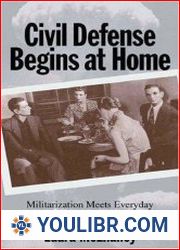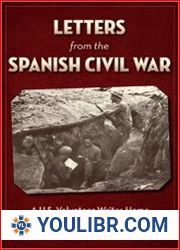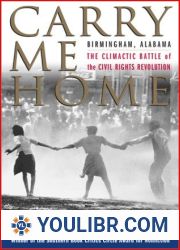
BOOKS - HISTORY - Civil Defense Begins at Home Militarization Meets Everyday Life in ...

Civil Defense Begins at Home Militarization Meets Everyday Life in the Fifties
Author: Laura McEnaney
Year: 2000
Format: PDF
File size: 28 MB
Language: ENG

Year: 2000
Format: PDF
File size: 28 MB
Language: ENG

The book "Civil Defense Begins at Home: Militarization Meets Everyday Life in the Fifties" explores how the United States government's militarization of everyday life during the Cold War era impacted society and culture. The author examines how civil defense preparedness became a part of daily life, from duck-and-cover drills in schools to fallout shelters in backyards, and how this affected Americans' sense of security and identity. The book begins by discussing the historical context of the Cold War and the fear of nuclear war, which led to the development of civil defense programs. The author then delves into the various aspects of civil defense, including the creation of fallout shelters, the distribution of civil defense pamphlets, and the implementation of duck-and-cover drills in schools. One of the most significant themes of the book is the way that militarization seeped into everyday life, from the design of homes and neighborhoods to the content of popular media. The author argues that civil defense was not just about preparing for disaster but also about creating a sense of community and shared purpose among Americans.
Книга «Гражданская оборона начинается дома: милитаризация встречается с повседневной жизнью в пятидесятые годы» исследует, как милитаризация повседневной жизни правительством Соединенных Штатов в эпоху холодной войны повлияла на общество и культуру. Автор рассматривает, как готовность к гражданской обороне стала частью повседневной жизни, от учений «утка и покров» в школах до убежищ от осадков на заднем дворе, и как это повлияло на чувство безопасности и идентичности американцев. Книга начинается с обсуждения исторического контекста холодной войны и страха ядерной войны, что привело к разработке программ гражданской обороны. Затем автор углубляется в различные аспекты гражданской обороны, включая создание осадочных укрытий, распространение брошюр по гражданской обороне и проведение учений «утка и покров» в школах. Одна из наиболее значимых тем книги - способ, которым милитаризация просочилась в повседневную жизнь, от дизайна домов и кварталов до содержания популярных СМИ. Автор утверждает, что гражданская оборона была не только подготовкой к катастрофе, но и созданием чувства общности и общей цели среди американцев.
livre « La défense civile commence à la maison : la militarisation rencontre la vie quotidienne dans les années 50 » explore comment la militarisation de la vie quotidienne par le gouvernement américain à l'époque de la guerre froide a affecté la société et la culture. L'auteur examine comment la préparation à la défense civile est devenue une partie de la vie quotidienne, des exercices de canard et de couverture dans les écoles aux abris des précipitations dans la cour, et comment cela a influencé le sentiment de sécurité et d'identité des Américains. livre commence par discuter du contexte historique de la guerre froide et de la peur de la guerre nucléaire, qui a conduit à la mise en place de programmes de défense civile. L'auteur s'intéresse ensuite à divers aspects de la protection civile, notamment à la création d'abris sédimentaires, à la distribution de brochures sur la protection civile et aux exercices de canard et de couverture dans les écoles. L'un des thèmes les plus importants du livre est la façon dont la militarisation s'est infiltrée dans la vie quotidienne, de la conception des maisons et des quartiers au contenu des médias populaires. L'auteur affirme que la défense civile n'était pas seulement une préparation à la catastrophe, mais aussi la création d'un sentiment de communauté et d'un objectif commun parmi les Américains.
libro «La defensa civil comienza en casa: la militarización se encuentra con la vida cotidiana en los cincuenta» explora cómo la militarización de la vida cotidiana por parte del gobierno de los Estados Unidos en la era de la Guerra Fría afectó a la sociedad y la cultura. autor considera cómo la preparación para la defensa civil se ha convertido en parte de la vida cotidiana, desde las enseñanzas de «pato y cubierta» en las escuelas hasta los refugios contra las lluvias en el patio trasero, y cómo ha influido en la sensación de seguridad e identidad de los estadounidenses. libro comienza con una discusión sobre el contexto histórico de la Guerra Fría y el miedo a una guerra nuclear, que llevó al desarrollo de programas de defensa civil. A continuación, el autor profundiza en diversos aspectos de la defensa civil, entre ellos la creación de refugios sedimentarios, la distribución de folletos sobre la defensa civil y la realización de ejercicios de «pato y cubierta» en las escuelas. Uno de los temas más significativos del libro es la forma en que la militarización se filtró a la vida cotidiana, desde el diseño de casas y barrios hasta el contenido de los medios populares. autor sostiene que la defensa civil no sólo fue una preparación para el desastre, sino que también creó un sentido de comunidad y un objetivo común entre los estadounidenses.
O livro «A Defesa Civil Começa em Casa: Militarização convive com a vida cotidiana nos anos 50» explora como a militarização da vida cotidiana pelo governo dos Estados Unidos durante a Guerra Fria afetou a sociedade e a cultura. O autor vê como a preparação para a defesa civil se tornou parte da vida cotidiana, desde os ensinamentos de pato e cobertura nas escolas até os abrigos de chuvas no quintal, e como isso afetou o sentimento de segurança e identidade dos americanos. O livro começa com um debate sobre o contexto histórico da Guerra Fria e o medo de uma guerra nuclear, que levou ao desenvolvimento de programas de defesa civil. Em seguida, o autor se aprofundou em vários aspectos da defesa civil, incluindo a criação de esconderijos sedimentares, a distribuição de panfletos de defesa civil e a realização de exercícios de pato e cobertura nas escolas. Um dos temas mais importantes do livro é a forma como a militarização foi infiltrada na vida cotidiana, desde o design de casas e quarteirões até o conteúdo da mídia popular. O autor afirma que a Defesa Civil não foi apenas a preparação para o desastre, mas também a criação de um sentimento de comunidade e um objetivo comum entre os americanos.
Il libro «La difesa civile inizia a casa: la militarizzazione incontra la vita quotidiana negli anni Cinquanta» esplora come la militarizzazione della vita quotidiana da parte del governo degli Stati Uniti durante la guerra fredda abbia influenzato la società e la cultura. L'autore considera come la preparazione alla protezione civile sia diventata parte della vita quotidiana, dalle esercitazioni «anatra e coperta» nelle scuole ai rifugi per le precipitazioni nel giardino, e come ciò abbia influenzato il senso di sicurezza e l'identità degli americani. Il libro inizia con un dibattito sul contesto storico della guerra fredda e sulla paura della guerra nucleare, che ha portato allo sviluppo di programmi di protezione civile. L'autore approfondisce poi diversi aspetti della protezione civile, tra cui la creazione di rifugi sedimentari, la distribuzione di brochure sulla protezione civile e l'esecuzione di esercitazioni «anatra e coperta» nelle scuole. Uno dei temi più significativi del libro è il modo in cui la militarizzazione si è infiltrata nella vita quotidiana, dal design di case e quartieri ai contenuti dei media popolari. L'autore sostiene che la difesa civile non era solo la preparazione per il disastro, ma anche la creazione di un senso di comunità e un obiettivo comune tra gli americani.
Das Buch „Civil Defense Begins at Home: Militarisation meets Daily Life in the Fifties“ untersucht, wie sich die Militarisierung des Alltags durch die Regierung der Vereinigten Staaten während des Kalten Krieges auf Gesellschaft und Kultur auswirkte. Der Autor untersucht, wie die Bereitschaft zur Zivilverteidigung Teil des täglichen bens geworden ist, von Enten- und Deckungsübungen in Schulen bis hin zu Hinterhofniederschlagsunterkünften, und wie dies das Gefühl der cherheit und Identität der Amerikaner beeinflusst hat. Das Buch beginnt mit einer Diskussion über den historischen Kontext des Kalten Krieges und die Angst vor einem Atomkrieg, die zur Entwicklung von Zivilschutzprogrammen führte. Der Autor geht dann auf verschiedene Aspekte des Zivilschutzes ein, einschließlich der Schaffung von Sedimentunterkünften, der Verteilung von Zivilschutzbroschüren und der Durchführung von Enten- und Deckungsübungen in Schulen. Eines der wichtigsten Themen des Buches ist die Art und Weise, wie Militarisierung in den Alltag eingedrungen ist, von der Gestaltung von Häusern und Nachbarschaften bis hin zu den Inhalten populärer Medien. Der Autor argumentiert, dass der Zivilschutz nicht nur die Vorbereitung auf die Katastrophe war, sondern auch die Schaffung eines Gemeinschaftsgefühls und eines gemeinsamen Ziels unter den Amerikanern.
הספר ”Civil Defense Begins at Home: Militarization Meets Everyday Life in the Fifties” חוקר כיצד המיליטריזציה של חיי היומיום על ידי ממשלת ארצות הברית בתקופת המלחמה הקרה השפיעה על החברה והתרבות. המחבר בוחן כיצד הפכה המוכנות להגנה אזרחית לחלק מחיי היומיום, החל מתרגילי ברווז וכיסוי בבתי הספר וכלה במקלטי משקעים בחצר האחורית, וכיצד השפיע הדבר על תחושת הביטחון והזהות של האמריקאים. הספר פותח בדיונים על ההקשר ההיסטורי של המלחמה הקרה והפחד מפני מלחמה גרעינית, שהובילו לפיתוח תוכניות הגנה אזרחיות. המחבר מתעמק בהיבטים שונים של הגנה אזרחית, כולל הקמת מקלטי משקע, הפצת חוברות הגנה אזרחית ועריכת תרגילי ברווז וכיסוי בבתי הספר. אחד הנושאים המשמעותיים ביותר בספר הוא הדרך שבה הצבא חלחל לחיי היומיום, החל בעיצוב הבתים והשכונות וכלה בתוכן התקשורת הפופולרית. המחבר טוען שההגנה האזרחית לא רק התכוננה לאסון, אלא גם יצרה תחושה של קהילה ותכלית משותפת בקרב האמריקאים.''
"vil Savunma Evde Başlar: Militarizasyon Ellili Yıllarda Günlük Yaşamla Buluşuyor" kitabı, Soğuk Savaş döneminde ABD hükümetinin günlük yaşamın militarizasyonunun toplumu ve kültürü nasıl etkilediğini araştırıyor. Yazar, sivil savunma hazırlığının, okullardaki ördek ve örtü tatbikatlarından arka bahçedeki yağış barınaklarına kadar günlük yaşamın bir parçası haline geldiğini ve bunun Amerikalıların güvenlik ve kimlik duygusunu nasıl etkilediğini inceliyor. Kitap, Soğuk Savaş'ın tarihsel bağlamını ve sivil savunma programlarının geliştirilmesine yol açan nükleer savaş korkusunu tartışarak başlıyor. Yazar daha sonra tortul barınaklar kurmak, sivil savunma broşürleri dağıtmak ve okullarda ördek ve örtü egzersizleri yapmak da dahil olmak üzere sivil savunmanın çeşitli yönlerini araştırıyor. Kitabın en önemli temalarından biri, militarizasyonun evlerin ve mahallelerin tasarımından popüler medyanın içeriğine kadar günlük hayata sızmasıdır. Yazar, sivil savunmanın sadece felakete hazırlanmakla kalmayıp, aynı zamanda Amerikalılar arasında bir topluluk ve ortak amaç duygusu yarattığını savunuyor.
يستكشف كتاب «الدفاع المدني يبدأ في الداخل: العسكرة تلتقي بالحياة اليومية في الخمسينيات» كيف أثرت عسكرة الحياة اليومية من قبل حكومة الولايات المتحدة خلال حقبة الحرب الباردة على المجتمع والثقافة. ينظر المؤلف في كيف أصبح الاستعداد للدفاع المدني جزءًا من الحياة اليومية، من تدريبات البط والغطاء في المدارس إلى ملاجئ هطول الأمطار في الفناء الخلفي، وكيف أثر ذلك على شعور الأمريكيين بالأمن والهوية. يبدأ الكتاب بمناقشة السياق التاريخي للحرب الباردة والخوف من الحرب النووية، مما أدى إلى تطوير برامج الدفاع المدني. ثم يتعمق صاحب البلاغ في مختلف جوانب الدفاع المدني، بما في ذلك إنشاء ملاجئ رسوبية، وتوزيع منشورات الدفاع المدني، وإجراء تمارين البط والغطاء في المدارس. أحد أهم موضوعات الكتاب هو الطريقة التي تسربت بها العسكرة إلى الحياة اليومية، من تصميم المنازل والأحياء إلى محتوى وسائل الإعلام الشعبية. يجادل المؤلف بأن الدفاع المدني لم يكن يستعد للكارثة فحسب، بل خلق أيضًا إحساسًا بالمجتمع والهدف المشترك بين الأمريكيين.
《民防始於國內:軍事化與五十代的日常生活相遇》一書探討了冷戰時期美國政府日常生活的軍事化如何影響社會和文化。作者研究了民防準備如何成為日常生活的一部分,從學校的「鴨子和遮蓋」演習到後院的防雨庇護所,以及它如何影響美國人的安全和身份感。這本書首先討論了冷戰的歷史背景和對核戰爭的恐懼,這導致了民防計劃的發展。然後,作者深入研究了民防的各個方面,包括建立沈積物庇護所,分發民防小冊子以及在學校進行「鴨子和遮蓋」演習。該書最重要的主題之一是軍事化滲入日常生活的方式,從房屋和街區的設計到大眾媒體的內容。作者認為,民防不僅是災難的準備,而且是在美國人中營造一種社區意識和共同目標。








 49
49  1 TON
1 TON







































